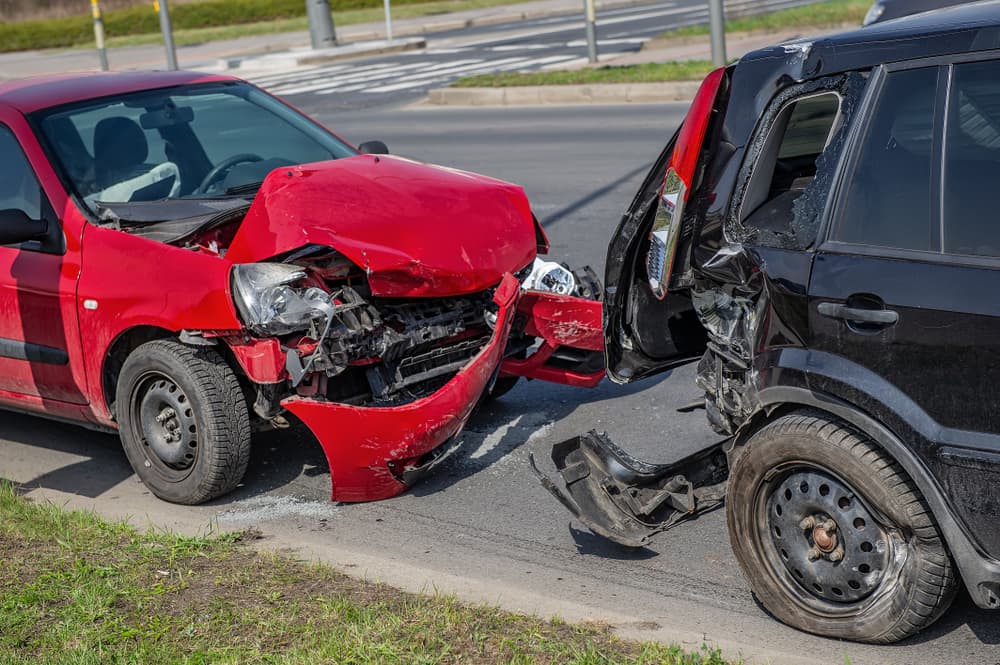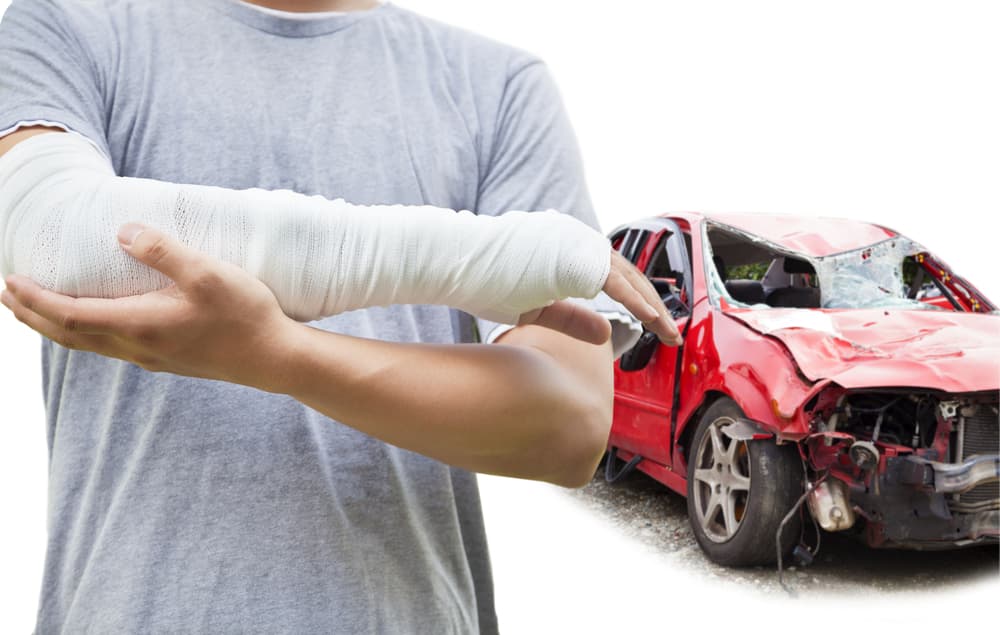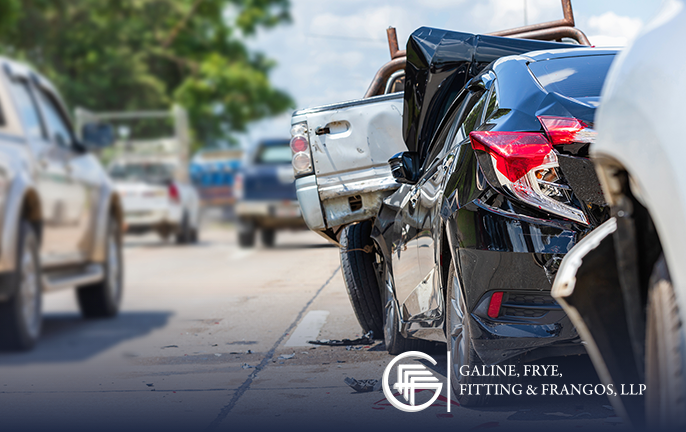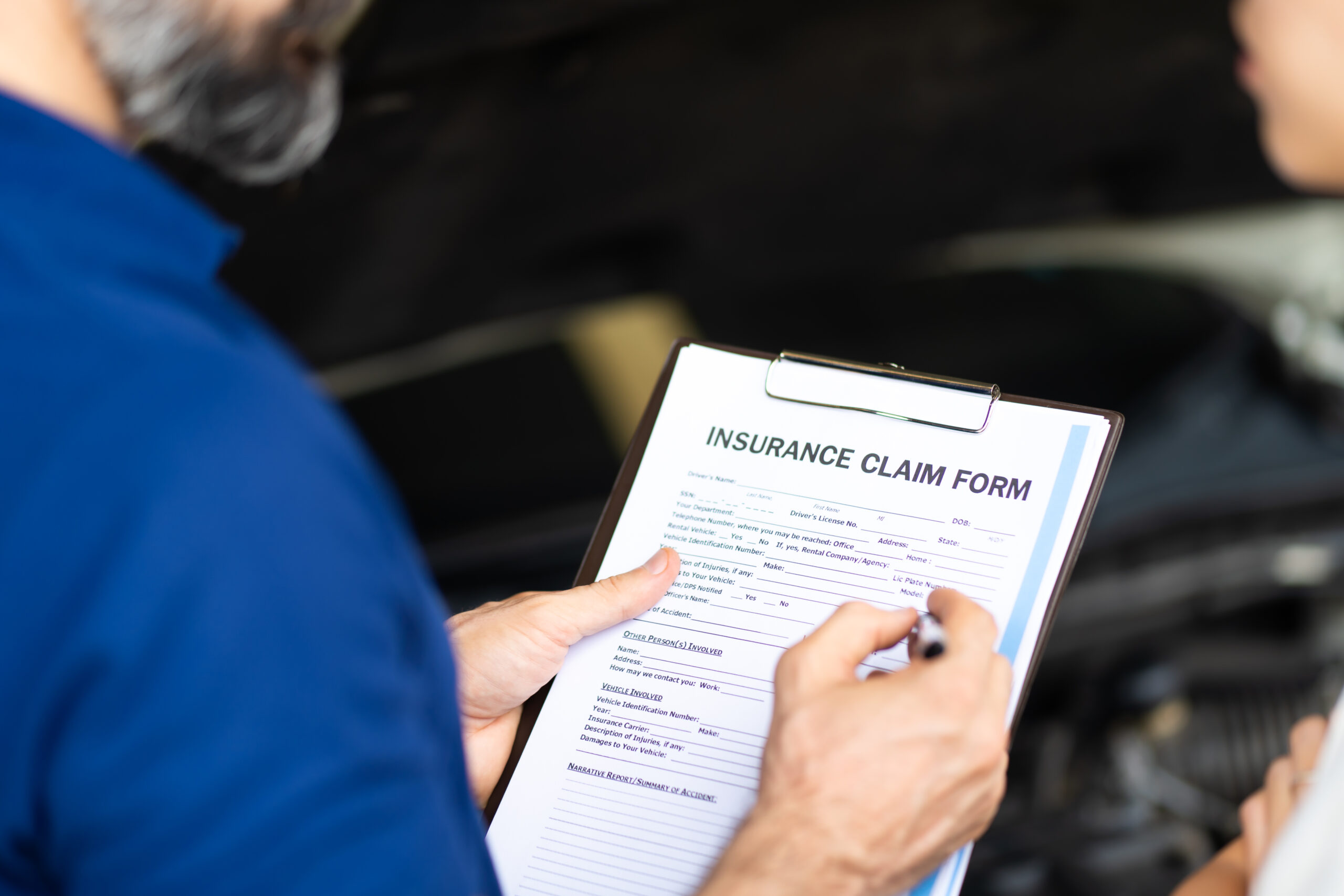Rear-end accidents and injuries typically happen when other drivers speed, tailgate, or commit other negligent acts while they are on the road. In these situations, the at-fault driver’s insurance company will typically compensate you.
However, insurance companies are never on your side, and they will do everything possible to undervalue your claim. Therefore, you need to have skilled legal representation in your corner at every stage of the proceedings.
A knowledgeable car accident lawyer can investigate your case and file a claim on your behalf with the appropriate insurance company. If the insurance company refuses to compensate you fairly through settlement, your lawyer can file a lawsuit and litigate your case to an efficient resolution in the state court system.
Dealing With the Insurance Company After a Rear-end Accident

After a rear-end car accident where someone else is at fault, your car accident lawyer can deal with the at-fault driver’s insurance company on your behalf.
Specifically, here’s what they can do:
- Gather Evidence – Your lawyer will collect evidence to support your claim. This may include police reports, witness statements, photos of the accident scene, and medical records detailing your injuries.
- Assess Damages – They’ll also evaluate the extent of your injuries and the damages to your vehicle. This helps determine the compensation you’re entitled to recover under the law.
- Communicate with the Insurance Company – Your lawyer will also handle all communications with the at-fault driver’s insurance company on your behalf. They’ll speak with the insurance adjusters and negotiate to ensure you receive fair compensation.
- Present Your Case – Your lawyer will present your case to the insurance company, highlighting the facts of the accident and the effect it has had on your life. They will also emphasize the severity of your injuries and the financial losses you have incurred.
- Negotiate Settlements – Your attorney can negotiate with the insurance company to reach a fair settlement. This involves advocating for your best interests and pushing for compensation that adequately covers your medical bills, lost income, and pain and suffering.
- Litigate if Necessary – If the insurance company refuses to offer a fair settlement, your lawyer may recommend taking legal action. They can file a lawsuit on your behalf and represent you in court, fighting for the compensation you deserve.
- Represent You at Trial – In the event that your case goes to trial, your lawyer can represent you in court. They will present favorable evidence, cross-examine witnesses, and argue your case before a judge and jury.
- Explain the Legal Process – Throughout the process, your lawyer will explain your rights and legal options. They will inform you about every step and answer any questions you have about your case.
- Protect Your Rights – Most importantly, your lawyer will protect your rights and ensure that the insurance company treats you fairly. They will work tirelessly to secure the best possible outcome for your case.
Having a car accident lawyer on your side can make a big difference in the outcome of your claim. They can handle the complexities of dealing with insurance companies so that you can focus on recovering from your injuries and moving forward with your life.
Litigating a Rear-end Car Accident Case

Effectively litigating a car accident case involves several steps, including settling with the at-fault driver’s insurance company, going to trial, or exploring alternative dispute resolution (ADR) options.
Here’s how each option works:
- Settling with the Insurance Company – In many cases, your car accident lawyer will negotiate a settlement with the at-fault driver’s insurance company outside of court. Negotiations typically continue back and forth between the parties until the matter is either resolved or the parties reach an impasse. You are the one who ultimately decides whether to accept or reject a pending settlement offer.
- Going to Trial – If the case does not settle during negotiations, your lawyer may recommend taking your case to trial. This involves presenting your case to a judge and jury. At trial, your lawyer can introduce evidence, call witnesses, and make a closing argument in support of your case. The judge or jury will then decide the case outcome.
- Alternative Dispute Resolution (ADR) – ADR methods, such as mediation or binding arbitration, offer alternative paths to resolving a rear-end car accident case. In mediation, a neutral third party facilitates settlement discussions between the parties. However, during arbitration, a neutral arbitrator listens to both sides of the case and makes a binding final decision regarding damages.
Ultimately, the best approach for litigating a rear-end car accident case will depend upon the specific circumstances of the case, including the severity of injuries, the extent of damages, and the willingness of the insurance company to make a fair settlement offer.
Your car accident lawyer will advise you on the most appropriate course of action and work to achieve the best possible outcome for your case.
What are the Most Common Injuries in a Rear-end Car Crash?

When a driver acts carelessly or negligently on the road, it can lead to various types of injuries and harm. These injuries can range from minor bruises to severe, life-altering conditions.
Here are some of the most common injuries caused by rear-end car crashes:
- Broken Bones – The force of a car crash can cause bones to break or fracture. Commonly affected bones include those in the arms, legs, wrists, ankles, ribs, and collarbones. Broken bones usually require invasive medical treatment, such as surgery or casting, and may take weeks or months to heal fully.
- Whiplash – One of the most frequent injuries in car accidents (especially rear-end accidents) is whiplash. This happens when the collision forces the victim’s head backward and forward in an abrupt manner, causing strain to the neck muscles.
- Head Injuries – Head injuries can range from headaches to concussions to comas and other traumatic brain injuries (TBIs). Even with seat belts and airbags, the force of a collision can cause the victim’s head to strike against objects inside the car – or the windows. Head injuries can have varying degrees of severity, from mild headaches to long-term cognitive impairments.
- Cuts and Lacerations – Broken glass, flying debris, or sharp objects inside the vehicle can cause cuts and lacerations during a crash. Depending on their severity, these injuries may require stitches or even surgery to repair.
- Spinal Cord Injuries – Damage to the accident victim’s spinal column can result in partial or complete paralysis. In severe cases, spinal cord injuries can lead to permanent disability, affecting mobility and sensation below the site of the injury.
- Internal Injuries – The force of impact in a car accident can cause internal organs to become bruised, punctured, or ruptured. Internal injuries may not always be apparent immediately after a crash and can worsen over time if left untreated. Prompt medical attention is crucial to prevent these complications from occurring.
- Psychological Trauma – Car accidents can also cause emotional and mental trauma, such as depression, anxiety, or post-traumatic stress disorder (PTSD).
It’s important for drivers to remain attentive and follow traffic laws to prevent accidents and reduce the risk of injuries to themselves and others on the road. If you suffered one or more of these injuries in a recent car accident, you should consult an experienced car accident attorney about your legal options right away.
How and Where Do Rear-end Traffic Accidents Most Frequently Occur?
Here’s a breakdown of how and where rear-end traffic accidents most frequently occur:
- Traffic Congestion – Rear-end accidents often happen in areas with heavy traffic congestion, such as during rush hour or in stop-and-go highway traffic. When vehicles are closely packed together, there is less room for drivers to react to sudden changes in speed or unexpected obstacles, increasing the likelihood of rear-end collisions.
- Intersection Collisions – Intersections are another common location for rear-end accidents. These accidents often occur when the lead vehicle stops suddenly, either to obey a traffic signal or to make a turn, and the following vehicle fails to brake in time. Drivers may lose focus, follow too closely, or misjudge the distance needed to stop safely.
- Tailgating – Following another vehicle too closely, also known as tailgating, is a major factor in rear-end collisions. When drivers do not maintain a safe following distance between their vehicle and the vehicle in front of them, they have less time to react if the lead vehicle slows down or stops suddenly. This behavior grows more dangerous at high speeds or during inclement weather.
- Distracted Driving – Distractions such as texting, talking on the phone, drinking, eating, or adjusting the vehicle entertainment system can divert a driver’s attention away from the road, increasing the risk of rear-end accidents. Even a momentary lapse in concentration can result in a collision if the driver negligently fails to notice changes in traffic patterns or the actions of other vehicles.
- Weather Conditions – Adverse weather conditions like rain, snow, or fog can decrease visibility and make road surfaces slippery, leading to rear-end accidents. Reduced traction and longer stopping distances require drivers to adjust their speed and driving behavior accordingly to avoid collisions.
- Sudden Stops – Rear-end accidents can also occur when a vehicle unexpectedly stops or slows down due to mechanical issues, road debris, or animals crossing the road. Irresponsible drivers who are following too closely may not have enough time to react and brake safely, resulting in a collision.
To reduce the risk of rear-end accidents, other drivers should maintain a safe following distance, pay attention to the road and traffic conditions, avoid distractions, and adjust their driving behavior based on the prevailing weather and roadway conditions.
Guarding against common risks and practicing defensive driving techniques can prevent rear-end collisions and keep everyone safe.
Recovering Financial Compensation for a Rear-end Accident
After a rear-end car crash, accident victims may suffer financial losses and damages.
Here are the most important types of financial compensation they may recover:
- Economic Damages – These are tangible, quantifiable losses resulting from the accident, such as medical bills, vehicle repair or replacement costs, lost income due to missed work, and future medical expenses related to ongoing treatment or rehabilitation.
- Pain and Suffering – Compensation for pain and suffering includes physical discomfort, emotional distress, and mental anguish experienced as a result of the accident and injuries sustained. This compensation is intended to provide financial relief for the non-economic effects of the accident on the victim’s life.
- Lost Quality of Life – Rear-end car accidents can significantly affect an individual’s quality of life by limiting their ability to engage in activities they once enjoyed, affecting relationships, and causing emotional distress. Compensation for lost quality of life aims to address these intangible losses and restore a sense of normalcy and well-being to the victim’s life.
- Loss of Use of a Body Part – If the accident results in the loss or impairment of a body part, such as an arm, leg, or hand, the victim may be entitled to compensation for the loss of use or function of that body part. This compensation can help cover the costs of medical treatment, rehabilitation, and assistive devices needed to cope with the disability.
- Emotional Distress – In addition to physical injuries, rear-end car accidents can cause significant emotional trauma, including anxiety, depression, and post-traumatic stress disorder (PTSD). Compensation for emotional distress seeks to address the psychological effects of the accident and provide support for mental health treatment and therapy.
- Loss of Consortium – If the rear-end car accident results in a severe injury that affects the victim’s relationship with their partner or spouse, the partner/spouse may be entitled to compensation for loss of consortium. This compensation acknowledges the effect of the victim’s injury on their relationships with others.
- Punitive Damages – In cases involving egregious negligence or intentional misconduct by the at-fault party, punitive damages may be an additional form of punishment and deterrent. These damages do not stem from financial losses and are only available in court.
Speak With a Car Accident Lawyer About Your Case Today

If you recently suffered injuries in a rear-end car accident that a negligent driver caused, you may have legal options open to you.
A knowledgeable car accident lawyer in your jurisdiction can promptly investigate your case, determine your options, and file a claim or lawsuit on your behalf.
Your personal injury attorney in Santa Barbara can then represent you during all settlement negotiations or litigation proceedings in pursuit of the financial recovery you deserve.

